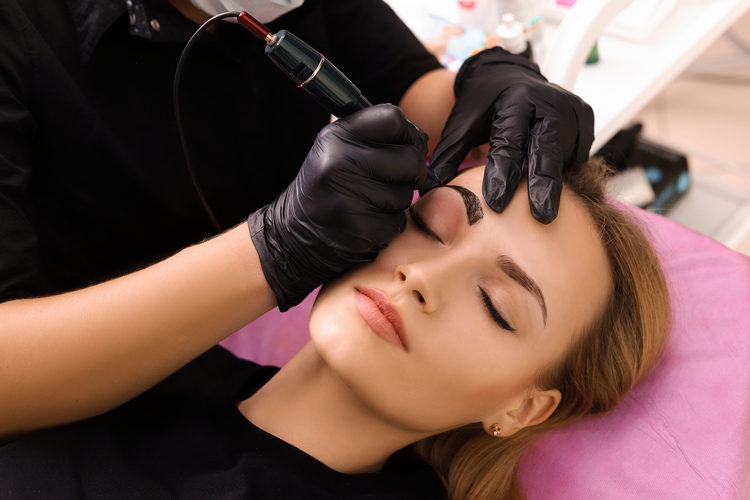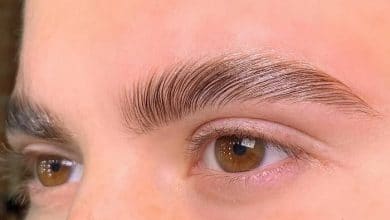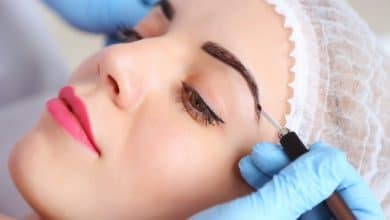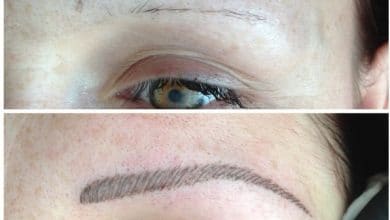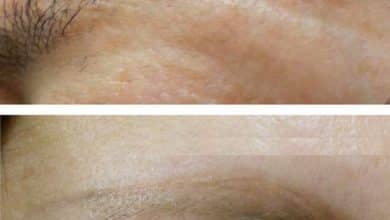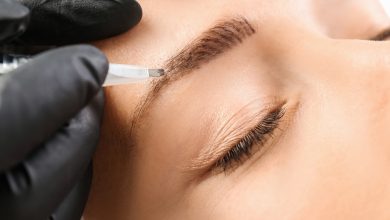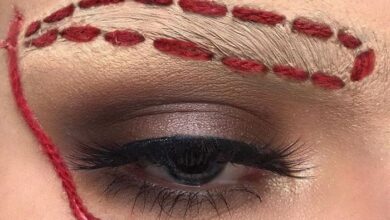How to remove old eyebrow microblading?
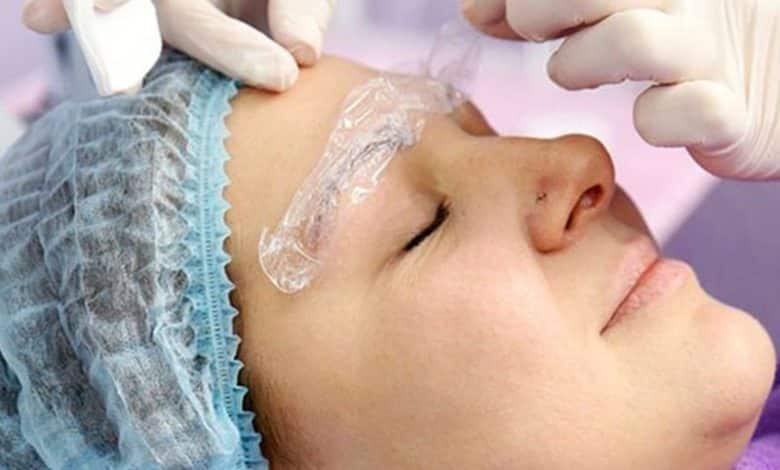
If you’re one of the many people who have gotten eyebrow microblading done, you know how transformative it can be. The semi-permanent tattooing technique can make your eyebrows look fuller and more defined, but what do you do if you’re unhappy with the results or simply want to remove the old microblading? In this article, we’ll take a deep dive into everything you need to know about removing old eyebrow microblading, including the different methods available, the risks and benefits, and tips for aftercare.
Eyebrow microblading has become a popular cosmetic procedure in recent years, providing a semi-permanent solution for those who want fuller, more defined eyebrows. However, not all microblading treatments turn out as expected, leaving many people wanting to remove their old eyebrow microblading and start anew. The process of removing old eyebrow microblading can seem daunting, but with the right knowledge and preparation, it can be a straightforward and safe process.
In this article, we’ll cover everything you need to know about removing old eyebrow microblading, including the risks and benefits of the procedure, common removal methods, how to prepare for the process, and what to expect during and after the treatment.
Key Takeaways:
- Removing old eyebrow microblading can be a safe and effective way to start fresh with new eyebrows.
- Common methods for removing old eyebrow microblading include laser removal, saline solution, and manual removal.
- It’s important to research and choose a reputable professional with experience in eyebrow microblading removal.
- The process of removing old eyebrow microblading can be uncomfortable, but proper preparation and aftercare can help minimize any discomfort or side effects.
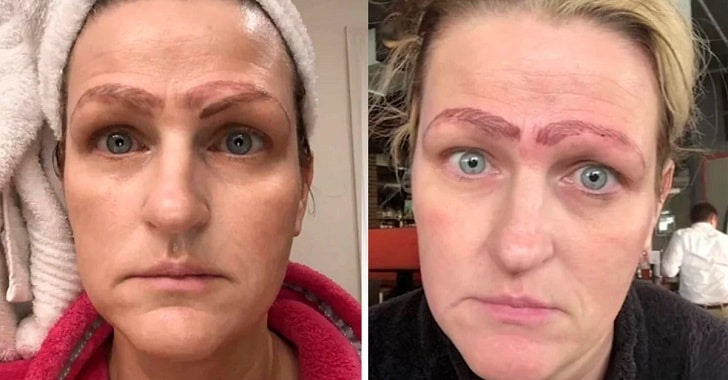
Eyebrow Microblading: An Overview
Before we delve into the removal process, let’s first review what eyebrow microblading is and how it works. Microblading is a technique where a skilled technician uses a tiny blade to deposit pigment under the skin’s surface, creating hair-like strokes to mimic the look of natural eyebrows. The procedure typically takes two to three hours and can last anywhere from one to three years, depending on your skin type and other factors.
- The pigment has faded and is no longer visible
- The shape or color of the eyebrows is no longer desirable
- The microblading was done poorly or by an inexperienced technician
- You’re experiencing an allergic reaction or other adverse side effects
Now that we know why someone may want to remove old eyebrow microblading, let’s explore the different methods available.
Methods for Removing Old Eyebrow Microblading
There are several methods for removing old eyebrow microblading, each with its own advantages and disadvantages. It’s important to note that some methods may not be suitable for everyone, so it’s important to speak with a licensed technician or dermatologist to determine the best course of action for you.
1. Laser Removal
Laser removal is one of the most popular methods for removing old eyebrow microblading. The procedure involves using a specialized laser to break up the pigment particles, allowing the body to absorb and eliminate them. While laser removal can be effective, it’s important to note that it can also be painful and may require multiple sessions. Additionally, laser removal may not be suitable for people with darker skin tones or certain medical conditions.
2. Saline Solution
Saline solution is another popular method for removing old eyebrow microblading. The procedure involves injecting a saline solution into the skin to lift the pigment out. While saline solution removal is less painful than laser removal, it may require more sessions to achieve the desired results. Additionally, there is a risk of scarring with saline solution removal.
3. Microneedling
Microneedling is a technique that involves using tiny needles to create microchannels in the skin’s surface, allowing the body to naturally eliminate the pigment. While microneedling is less invasive than laser or saline solution removal, it may take longer to see results. Additionally, there is a risk of infection with microneedling, so it’s important to work with a licensed technician.
4. Chemical Removal
Chemical removal involves using a solution to break down the pigment particles, allowing them to be naturally eliminated by the body. While chemical removal is less painful than laser removal, it may require multiple sessions and can be damaging to the skin if not done properly.
Risks and Benefits of Removing Old Eyebrow Microblading
Before deciding to remove old eyebrow microblading, it’s important to weigh the risks and benefits. While removing the old microblading can be a great option for those who are unhappy with their results, it’s important to understand the potential risks.
Risks
1. Scarring: Depending on the method used for removal, there is a risk of scarring. This is especially true for saline solution removal, as injecting too much saline solution into the skin can cause scarring.
2. Infection: There is a risk of infection with any type of removal method, but this is especially true with microneedling. If the needles used for microneedling are not properly sterilized, it can lead to infection.
3. Skin damage: Laser and chemical removal can be damaging to the skin if not done properly. This is why it’s important to work with a licensed technician or dermatologist.
Benefits
1. Improved appearance: If you’re unhappy with the way your eyebrows look after microblading, removing the old pigment can improve your appearance.
2. Improved self-esteem: For many people, their eyebrows play a big role in their self-esteem. Removing old microblading can help boost self-confidence and self-esteem.
3. Better results with new microblading: If you’re planning on getting new microblading done, removing the old pigment can help ensure better results.
Tips for Aftercare
After you’ve had your old eyebrow microblading removed, it’s important to take proper care of your skin to promote healing and prevent infection. Here are some tips for aftercare:
- Keep the area clean: It’s important to keep the area clean to prevent infection. Use a gentle cleanser and avoid harsh soaps or scrubs.
- Avoid sun exposure: Sun exposure can slow down the healing process and cause the skin to become discolored. Avoid direct sunlight and wear a hat or sunglasses when outside.
- Don’t pick or scratch: It can be tempting to pick or scratch at the area, but this can lead to infection and scarring. Avoid touching the area and let it heal naturally.
- Use ointments or creams: Your technician or dermatologist may recommend using a special ointment or cream to help promote healing and prevent infection.
Removing old eyebrow microblading can be a great option for those who are unhappy with their results or experiencing adverse side effects. While there are several methods available, it’s important to work with a licensed technician or dermatologist to determine the best course of action for you. By weighing the risks and benefits and taking proper care of your skin after the procedure, you can achieve the best possible results.
How To Remove Microblading With Saline Tattoo Removal?
How to Remove Old and Dark Eyebrow Tattoo?
FAQs
1. What is eyebrow microblading, and why might someone want to have it removed?
Eyebrow microblading is a cosmetic procedure that involves using a small handheld tool to implant pigment into the skin, creating the appearance of fuller eyebrows. While many people are happy with the results of microblading, some may want to have it removed for a variety of reasons. These reasons can include dissatisfaction with the final result, changes in personal style or preference, or adverse side effects such as scarring or infection.
2. What are some of the common methods for removing old eyebrow microblading?
There are several methods for removing old eyebrow microblading, including laser removal, saline solution removal, microneedling, and chemical removal. Laser removal uses a laser to break up the pigment particles, allowing them to be absorbed and eliminated by the body. Saline solution removal involves injecting a saline solution into the skin, which lifts the pigment out of the skin as it heals. Microneedling uses tiny needles to puncture the skin, allowing the pigment to be released. Chemical removal involves applying a solution to the skin to break down the pigment.
3. How effective are these methods, and are there any risks or side effects to consider?
The effectiveness of these methods can vary depending on the individual and the specific method used. Laser removal is often the most effective, but it can also be the most expensive and risky. Saline solution removal and microneedling are less expensive and less risky, but may require multiple sessions to achieve the desired result. Chemical removal can also be effective, but can be harsh on the skin and may require a longer healing time. Risks and side effects can include scarring, infection, and skin damage, so it’s important to work with a licensed technician or dermatologist to minimize these risks.
4. Is it possible to remove eyebrow microblading at home, or do you need to see a professional?
While it may be possible to remove eyebrow microblading at home using DIY methods, it’s not recommended. Removing microblading pigment from the skin can be a delicate and risky process, and attempting to do it yourself can increase the risk of infection, scarring, and other adverse side effects. It’s best to see a professional who has experience and training in microblading removal to ensure the best possible outcome.
5. How long does it typically take to remove old eyebrow microblading, and how much does it cost?
The length of time it takes to remove old eyebrow microblading can vary depending on the individual and the specific method used. Laser removal typically requires fewer sessions than other methods, but can be more expensive. Saline solution removal and microneedling may require multiple sessions, but are generally less expensive. Chemical removal can take longer to heal, but may also be less expensive than laser removal. The cost of microblading removal can also vary depending on the provider, location, and method used.
6. Are there any factors that can affect how difficult it is to remove old eyebrow microblading?
Yes, there are several factors that can affect how difficult it is to remove old eyebrow microblading. These factors can include the depth and type of pigment, the skill and experience of the original microblading technician, the age of the pigment, and the location of the pigment on the face. In general, older and deeper pigments may be more difficult to remove than newer and shallower pigments.
7. What should you expect during the removal process, and how can you prepare for it?
When it comes to eyebrow microblading removal, the process can be uncomfortable, and it’s essential to understand what to expect during the procedure to make the experience as smooth as possible. Typically, the process involves the use of a hand-held tool, such as a tattoo gun, to gently exfoliate the pigment out of the skin. Some people compare the sensation to being repeatedly snapped with a rubber band.
Before the procedure, the technician will first numb the area with a local anesthetic cream to minimize discomfort. It’s essential to let your technician know if you are allergic to any numbing agents beforehand. The procedure can take several hours, and during that time, you should try to relax and breathe deeply.
After the procedure, the area may be red and swollen for several days, and it’s crucial to avoid sun exposure and harsh chemicals. The technician may provide a special ointment to apply to the area to help soothe any discomfort and promote healing. It’s important to follow any aftercare instructions carefully to minimize the risk of complications.
To prepare for the procedure, it’s essential to avoid blood-thinning medications, such as aspirin, for at least 24 hours before the appointment. It’s also essential to avoid alcohol, caffeine, and nicotine for at least 24 hours before the appointment. These substances can increase sensitivity and make the procedure more uncomfortable. Additionally, it’s important to discuss any medical conditions or medications with the technician before the procedure to minimize any risks or complications.
8. Can you get new eyebrow microblading after having the old version removed?
Yes, it is possible to get new eyebrow microblading after having the old version removed. However, it’s important to give your skin time to heal fully before undergoing a new procedure. It’s recommended to wait at least six weeks before having a new microblading procedure done to allow the skin to fully regenerate.
Before deciding to get new microblading, it’s important to evaluate the reasons why the previous procedure was removed. If the removal was due to dissatisfaction with the results or improper application, it’s essential to find a new technician who has the proper training and experience to ensure a successful outcome. If the removal was due to an adverse reaction, it’s essential to discuss any potential risks or complications with your healthcare provider before undergoing another procedure.
Additionally, it’s important to communicate with your technician about any changes you would like to make to your previous eyebrow shape or color. They can work with you to achieve your desired outcome while ensuring the new procedure is safe and effective.
9. Are there any alternative treatments or options to consider instead of removing old eyebrow microblading?
Yes, there are alternative treatments and options to consider instead of removing old eyebrow microblading. One option is to have the existing microblading touched up or corrected. A skilled technician can add new pigment to the existing design, covering up any faded or discolored areas and improving the overall appearance.
Another alternative treatment is to have the existing microblading removed and replaced with a different form of semi-permanent eyebrow makeup, such as powder or ombre brows. These techniques involve the use of a needle to apply pigment in a more subtle and natural-looking way, creating a softer, more blended effect.
Before deciding on any alternative treatments, it’s important to discuss your goals and concerns with a skilled technician. They can provide guidance on the best approach based on your unique situation and help you achieve the desired outcome.
Conclusion
If you’re unhappy with your old eyebrow microblading and want to remove it, there are several safe and effective methods available. Whether you choose laser removal, saline solution, or manual removal, it’s essential to research and choose a reputable professional with experience in the procedure. With the right preparation and aftercare, you can minimize any discomfort or side effects and achieve the desired results.
It’s also important to consider alternative options, such as covering up old microblading with makeup or opting for a corrective microblading procedure instead of removal. Ultimately, the choice of how to proceed is a personal one, and by weighing the risks and benefits of each option, you can make an informed decision about what’s best for you and your eyebrows.

